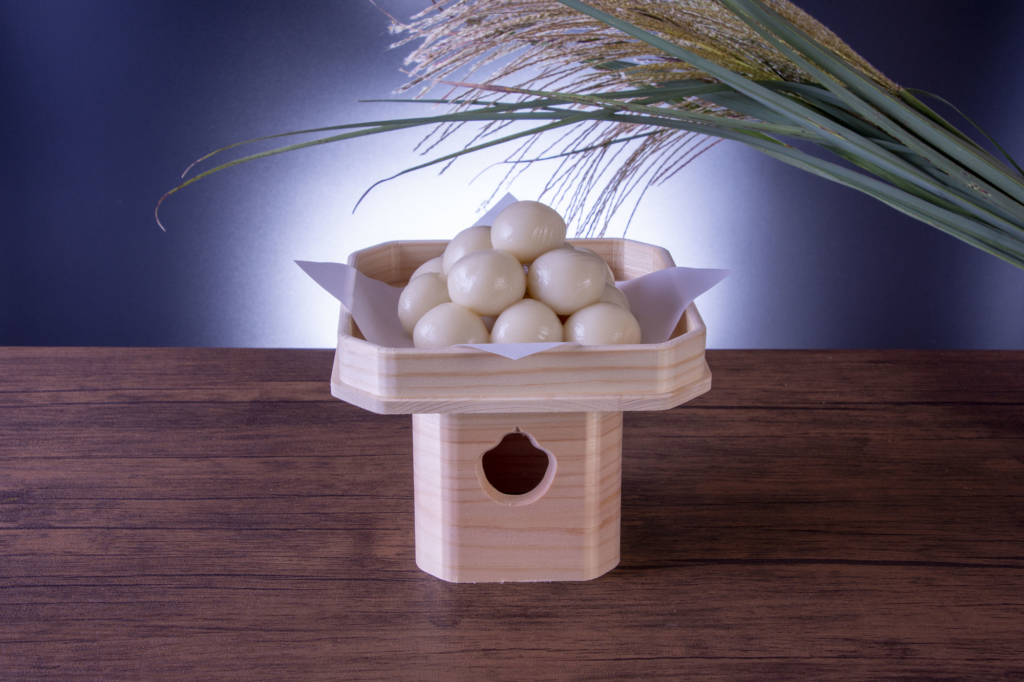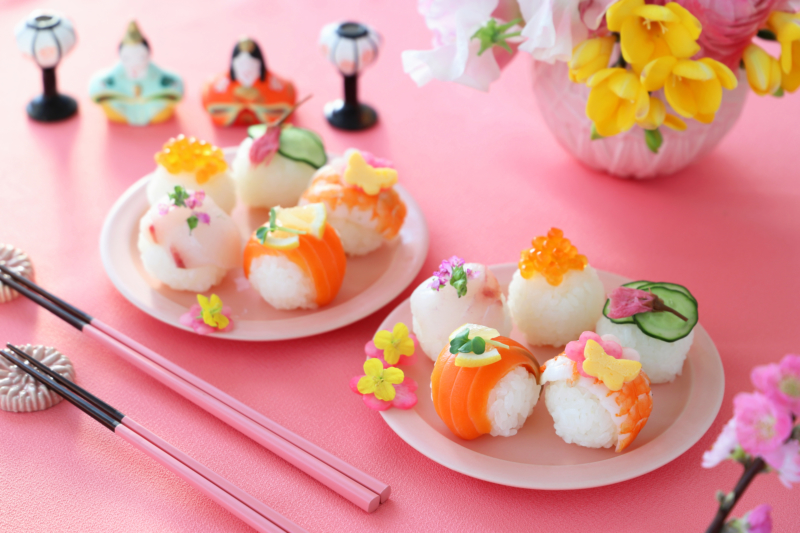The Japanese calendar year is filled with cultural events that the Japanese have celebrated for centuries. Walk into a supermarket or other store, and you’ll often find items and decorations related to the closest holiday. This article will discuss all of Japan’s cultural events that are still celebrated today.
Cultural Events/Holidays in Japan
The Japanese people have always paid attention to the seasons changing around them, including the movements of the sun and moon, the temperature, and the changes in nature. As a result, they have created numerous festivals that mark the slight changes in the seasons. These annual events play significant roles in people’s lives and have been carried onto the present day.
January ~ March
・The New Year
On January 1st, the kami (god) of the New Year, Toshigami-sama, is said to visit each household. Families pray to the god for bountiful harvests (gohoku-hojo) and a safe household (kanai-anzen) in the coming year.
Houses put up decorations like “kadomatsu” (a pine tree by the gate) and “shime-kazari” (thick “shimenawa” ropes) to invite the god into the house. “Kagami-mochi” is a stack of two or three flat mochis on a mini-pedestal, and this is where the god is said to reside during his visit. The first seven days of the year (15 days in some areas) is the “Matsu-no-uchi,” the official New Year’s period, when the decorations stay up and people wish each other a happy New Year. And on the 11th (though some regions differ) is the “kagami-biraki,” when the kagami-mochi is opened and eaten. Since this is where the New Year’s god is said to have stayed, eating it is allows you to consume his strength, giving you good health for the coming year.

・Setsubun
Setsubun takes place on February 3rd. Before Japan converted from the lunar calendar to the Western calendar about 150 years ago, the New Year took place on February 4th. Setsubun, then, is the old New Year’s Eve. It was thought that the changing of the seasons is the easiest time for evil spirits to sneak through, so Setsubun is when people scatter beans to keep them away. Somebody dressed as a demon enters the front gate, and those within the house throw beans at him while yelling “Oni wa soto! Fuku wa uchi!” (Demons out! Fortune in!) Once the demon leaves, each person counts the number of beans equivalent to their age and eats them, which works as a good-luck charm.

There are some regions that place a raw sardine head pierced on a holly branch at their front door, as sardines drive demons away. More common is the “ehomaki” sushi rolls, sold at supermarkets along with the beans, which are meant to be eaten intact (i.e. not sliced) while facing that year’s lucky direction. It’s also said that it’s bad luck to not eat it in silence.

・Hinamatsuri (Doll Festival)
Hinamatsuri, celebrated on March 3rd, is a festival where people wish for young girls to grow up healthy. Households with new daughters put up “hina” dolls in the house from around February 4th through the end of February, but then put them away immediately after the festival. Common foods for this celebration include “hishi-mochi,” which are three-colored mochi in diamond shapes; “hina-arare,” which are crunchy roasted mochi pieces made from rice; clam soup; and “chirashi-sushi,” where various ingredients are mixed into a bed of vinegared rice.

April ~ June
・Hana-matsuri (Buddha’s Birthday)
Hana-matsuri is a Buddhist religious occasion that takes place on April 8th and marks the birthday of Gautama Buddha, the founder of Buddhism. On this day, temples set up “hanamido,” little pavilions that are decorated with many flowers, within their grounds. With the hanamido is a little bowl called a “kanbutsuoke” that is filled with a sweet tea (amacha), as well as a “tanjo-butsu,” a little statue showing the newly-born Buddha.
It is said that when the Buddha was born, nine dragons appeared from the heavens and sweet rain poured down, representing a heavenly gift, a legend that this sweet-tea ceremony references.

・Tango no Sekku (Boys’ Day)
Tango no sekku, celebrated on May 5th, is a festival where people wish for young boys to grow up healthy. There are decorations of samurai dolls, kabuto helmets, and koi-nobori (carp banners). The armor that is found on the samurai dolls and the kabuto helmets are both protective charms for the young boy, symbolizing the wish that he would be protected from disease and injury as he grows up. Carp, meanwhile, are hardy fish that can survive in ponds and swamps, so they also symbolize health and vigor. These decorations are set up in early April and should be taken down soon after the festival.
In terms of food, those in the Kanto Region (around Tokyo) celebrate Boys’ Day with “kashiwa-mochi,” which are mochi filled with red bean paste and wrapped in an oak leaf, while those in the Kansai Region (around Osaka and Kyoto) prefer “hachimaki,” a sweet dumpling wrapped in bamboo leaf. It’s also traditional to take baths with iris leaves (shobu-yu), as the strong fragrance of the iris can ward off evil. As the day approaches, you can find these iris leaves at your local supermarket.

・Koromo-gae (Change of Clothes)
Twice each year, on June 1st and October 1st, government officials and students switch from their winter uniforms to their summer uniforms (or vice versa), all on the same day. This tradition first originated in the ancient Chinese court, and changing your uniforms on these particular days (initially in the old calendar) was said to bring good luck.
July ~ September
・Tanabata
During Tanabata, held on July 7th, people write their wishes on narrow strips of paper, hang them on bamboo trees along with decorations, and pray to the stars. Legend has it that this is the one day of the year when the weaver Orihime and the herder Hikoboshi, two lovers that are represented by the stars Vega and Altair, can cross the Milky Way to see each other.

・Doyo no Ushi no Hi (Midsummer Day of the Ox)
“Doyo” refers to any period when one season shifts into another, while “Day of the Ox” refers to the traditional calendar system where each day is assigned to one of twelve animals. There are four “doyo” throughout the year, and the one in the summer is associated with eating eel, a way to ward off heatstroke.
There are various explanations for how this came about. One theory attributes to the tradition to the famous scholar Hiraga Gennai, whose friend ran an eel store. To help the friend out, he wrote “Today is Doyo no Ushi no Hi” on the storefront, leading to a surge in sales.

・Obon
There are two periods in the year when most Japanese businesses close: the New Year’s period, and Obon, which takes place between August 13 and 16 each year (though with some yearly variation in the dates). During this period, many people return to their hometowns and pay their respects at their ancestors’ graves. This means that transportation, including planes, shinkansen, and highways, are enormously packed during this period.

・Otsukimi
While the date changes by year, this festival is celebrated between mid-September and early October on the night of the “Jugoya” (the “fifteenth night” referring to the old lunar calendar). Households place a decoration of “dango” (rice dumplings) and some “susuki” grass, as this grass is said to ward off evil spirits and serve as a prayer for a bountiful harvest.
This night either falls directly on or close to the full moon, which is known as the “harvest moon.” The sky is particularly clear at this time, making for a lovely full moon.

October ~ December
・Kannazuki
“Kannazuki” is the name given to the tenth month in the traditional calendar. This month, all the deities celebrated in all of the country’s shrines leave their posts and head to the Izumo Taisha grand shrine in Shimane Prefecture for a grand conference. This explains the name “kannazuki,” which means the “month without gods.” Incidentally, during this grand conference, the deities discuss people’s fates and who to bring together. This is why Izumo Taisha is seen as a lucky spot for relationships, bringing many visitors hoping for some matchmaking magic.
・Shichi-go-san
Around November 15, families pay a visit to a shrine to pray for their children’s health and longevity. For girls, this visit happens when they are 3 and 7 years old; for boys, this happens at the age of 5 (hence the name “shichi-go-san,” which means “seven-five-three”). During this visit, the children are given long, thin candies called “chidori-ame”: this reflects the wish that children grow up tall, thin, tenacious (like the hard candy), and live for 1000 years (“chidori” in Japanese).

・Tori-no-ichi
As mentioned earlier, each day is assigned to one of twelve animals, and this is true of times as well. Tori-no-ichi refers to open-air markets that take place in November, on the Day of the Rooster, during the hour of the Rooster (5 – 7 pm). Specifically, there are two such days within November, twelve days apart, and the first is called “ichi-no-tori” while the second is “ni-no-tori.” This tradition is centered on temples in the Kanto region, and the markets feature lucky items like maneki-neko (beckoning-cat figurines) and “kumade” (the colorful decorative rakes shown below, named after their resemblance to bears’ paws).

・Omisoka (New Year’s Eve), Joya-no-Kane (108 Bell Rings)
Omisoka refers to New Year’s Eve, which the family spends on a deep clean of the house and preparations for the New Year. On this day, temples ring the “joya-no-kane,” a total of 108 times between 11 PM and the New Year.

Just by going to supermarkets, you will bump into seasonal decorations associated with these events. Now that you know what they’re all about, you can go all in, prepare the food, and put up the decorations!
If you want to give feedback on any of our articles, you have an idea that you’d really like to see come to life, or you just have a question on Japan, hit us up on our Facebook!
The information in this article is accurate at the time of publication.

